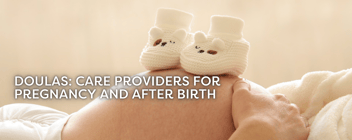Fact Sheet: Using DCFSA Funds for In-Home Care
.png?width=678&name=Content%20Library%20Card%20Images%20(17).png)
The Cost of In-Home Care
- The average cost of full-time in-home childcare exceeds $25,000 in all states. On average, families spend just under $10,000 on in-home childcare.
- Families with both an infant and a toddler typically spend much more on childcare than families with one infant.
Qualifying Children Receiving In-Home Care
- 12,275,000 children under the age of 13 receive in-home care and 4,275,000 of these children receive paid care.
- 29.9% of infants and toddlers attend home-based childcare as their primary arrangement.
DCFSA Availability and Tax Credit Use
- 39% of private sector employers and 63% of state and local government employers provide employees with access to Dependent Care Flexible Spending Accounts (DCFSAs).
- Of 153 million tax returns filed in 2017, only 6.5 million returns included the Child and Dependent Care Tax Credit (CDCTC), suggesting most employees who are offered DCFSA benefits are probably not using them.
Introduction
In 2016, CNN reported that in the United States, childcare now costs more than in-state college tuition, citing a report completed by the think tank, New America. According to New America, that number is significantly higher for full-time in-home care, the average of which exceeds $25,000 in every state.
In-home care expenses are DCFSA eligible expenses. However, both the availability and use of DCFSA care benefits have been historically low. In 2018, about 11.8% of all taxpayers claimed the CDCTC. Studies those this may be because employees simply don’t understand how to use DCFSA funds.
In this fact sheet, we cover the basics of who qualifies for DCFSA benefits and how to use DCFSA funds for in-home care the right way.
Using DCFSA Funds For In-Home Care
DCFSA, or dependent care FSA benefits, help working families pay for childcare and other dependent care. Funds can only be used for the care of qualifying persons for work-related expenses, which can include in-home care expenses. Since not all care expenses qualify, it’s important to understand who is a qualifying person, and what is work-related expense.
Who is a “Qualifying Person”?
A qualifying person includes qualifying children or qualifying persons who are 13 years old or older.
Qualifying Children
To be a qualifying child, the child must be your dependent and under the age of 13. The IRS provides special guidance for situations involving divorced or separated parents in Publication 503.
Qualifying Person 13 Years Old or Older
A person who is 13 years old or older is a qualifying person if:
- They are not physically or mentally able to care for themself,
- They have lived with the employee for more than half the year, and
- They either,
- were a dependent, or
- would have been a dependent, but they received a gross income of $4,300 or more, filed a joint return, or you or your spouse could be claimed as a dependent on someone else’s tax return.
Qualifying persons can also include the your spouse if they were unable to physically or mentally care for themself and lived with you for more than half the year.
What Type of In-Home Care is a DCFSA Eligible Expense?
Various kinds of in-home care may be provided to your family members, however not all care can be paid for using DCFSA funds. To pay for care expenses with DCFSA funds, they must be work-related expenses.
To be a work-related expense, it must allow you to work (or look for work), and it must be to provide care to the qualifying person. An expense is for “care” if the primary purpose of the expense is for the well-being and protection of the qualifying person.
“Work-Related Expense”
For in-home care to qualify as a DCFSA expense, it must allow you to work or look for work. So, for example, DCFSA funds can be used for after-school programming that runs until you’re done with work. However, they can’t be used to pay for babysitting on date nights or to attend weekend activities, as they will not be considered “work-related.”
“Well-Being and Protection”
For in-home care to qualify as a DCFSA eligible expense, the main purpose of the expense must be for the well-being and protection of a qualifying person. The most common in-home care expenses working parents pay for include payments for babysitters or payments towards elderly care for qualifying grandparents living at home.
Although not all household services qualify, they will if they are “at least partly for the well-being and protection of a qualifying person.” (IRS Publication 503, p. 7). For example, payments made to a housekeeper who cooks and provides babysitting to your 9-year-old at home while you’re at work will qualify, but gardening or driving services won’t unless they were minimal. If the housekeeper spends 10 minutes watering plants in the front yard, this would be considered minimal.
When Caregivers are Family Members
DCFSA funds can be used to pay family members like grandparents, aunts, or uncles, as long as they’re not:
- dependents,
- an employee’s child who is under the age of 19,
- a spouse, or
- the parent of a qualifying person who is under the age of 13.
In-Home Care Services Can Trigger Household Employer Taxes
Employees who hire a nanny for in-home care may have to pay employment taxes as “household employers.” These taxes may include Social Security and Medicare and Federal Unemployment Taxes (FUTA), or both. DCFSA funds can be used to pay these taxes.
Whether you owe taxes depends on whether you’re a household employer, how much you pay in wages to the household employee, and whether an exception applies.
Are you a household employer?
First, you must be a household employer to be subject to these employer taxes. To be a household employer, you have to hire someone to come to your home and complete household work. According to the IRS, household work includes babysitters, caretakers, cooks, nannies, etc. If you hire any of these individuals through childcare or home care agencies, then you are not a household employer.
Even if You are a Household Employer, Do You Owe Taxes?
If you are a household employer, you must pay either Social Security and Medicare, or FUTA, or both depending on how much you pay your household employee. According to IRS Publication 926, thresholds are as follows:
- You must pay Social Security and Medicare taxes if you pay your household employee $2,300 or more in 2021.
- You must pay FUTA tax if you pay an employee $1000 or more “in any calendar quarter of 2020 or 2021 to any household employees.”
Exceptions
According to the IRS, wages paid to your spouse or your child under the age of 21 don’t count towards the above thresholds. Wages paid to your parents, or an employee under the age of 18 at any time during that year may also be excepted, however, certain requirements must be met.



